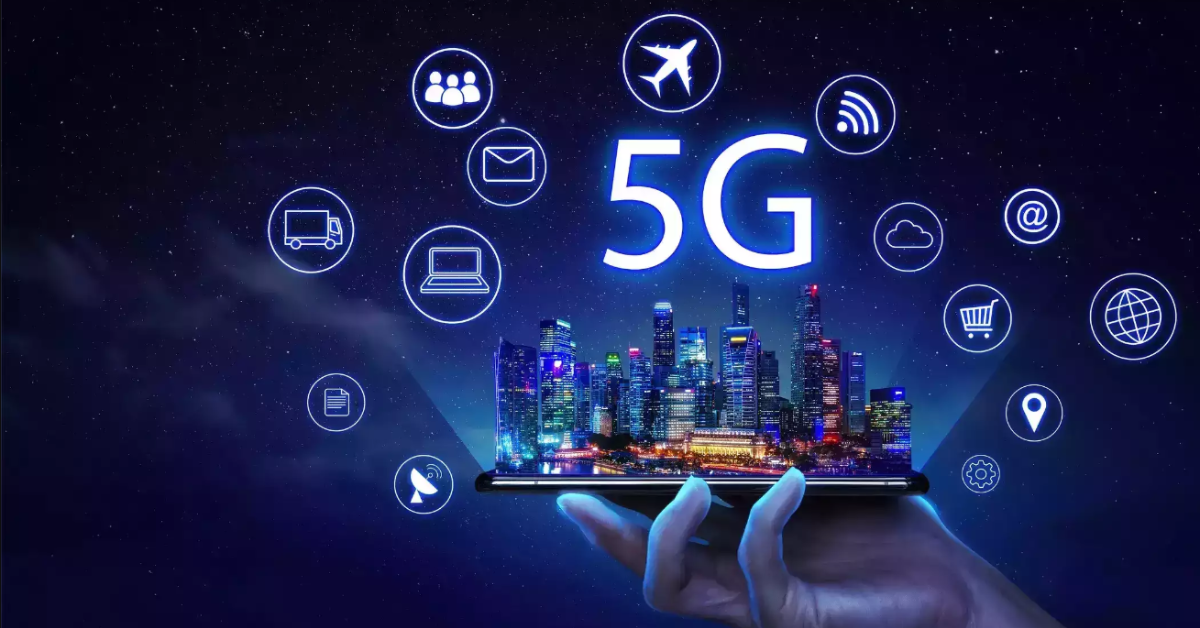5G and Beyond: The Expansion of 5G Networks and the Exploration of 6G Technologies
The advent of 5G technology has marked a significant leap in mobile connectivity, bringing faster speeds, lower latency, and enhanced network capacity. As 5G networks continue to expand globally, the technology’s full potential is becoming increasingly evident. However, the quest for even faster and more capable networks has already begun, paving the way for 6G technologies. This blog post delves into the current state of 5G networks, explores the emerging 6G technologies, and examines their transformative impacts on connectivity, smart cities, and autonomous systems.
- The Expansion of 5G Networks
1.1. The Evolution of 5G
5G technology represents a substantial upgrade from its predecessors. With initial deployments beginning around 2019, 5G has rapidly evolved, transforming the landscape of mobile connectivity. By 2024, 5G networks have become more widespread and integrated, reflecting the significant advancements in:
- Speed and Bandwidth: 5G offers speeds up to 10 Gbps, which is about 100 times faster than 4G LTE. This increased bandwidth supports a higher number of simultaneous connections and data-intensive applications.
- Latency: One of the most critical improvements in 5G is its reduced latency, often as low as 1 millisecond. This low latency is crucial for applications requiring real-time interaction, such as augmented reality (AR) and virtual reality (VR).
- Capacity: 5G networks are designed to handle a much larger number of connected devices simultaneously compared to 4G. This is essential for accommodating the growing Internet of Things (IoT) ecosystem and the surge in connected devices.
1.2. Key Components of 5G Networks
The expansion of 5G involves several key technological components and infrastructure improvements:
- Small Cells: To achieve high speeds and low latency, 5G networks deploy a dense array of small cells. These small cells complement traditional macro cells and are crucial for enhancing coverage and network capacity.
- Millimeter Waves (mmWave): 5G utilizes higher frequency bands, including millimeter waves, which offer increased bandwidth but have shorter range and penetration capabilities. Combining mmWave with lower frequency bands helps balance speed and coverage.
- Network Slicing: This technology allows operators to create multiple virtual networks on a single physical network. Each slice can be tailored to specific needs, such as enhanced mobile broadband, massive IoT, or ultra-reliable low-latency communications.
- Edge Computing: 5G networks integrate with edge computing to bring data processing closer to the end user. This reduces latency and improves the performance of real-time applications by minimizing the distance data must travel.
1.3. The Impact of 5G on Connectivity
5G is transforming connectivity in several significant ways:
- Enhanced Mobile Experience: Users benefit from faster internet speeds, improved streaming quality, and more reliable connections. This enhancement supports the growth of data-intensive applications and services.
- IoT Expansion: 5G’s increased capacity and low latency support a massive number of IoT devices. This fosters the development of smart homes, smart cities, and connected industrial systems, driving innovation across various sectors.
- Global Connectivity: Efforts are underway to extend 5G coverage to rural and underserved areas. This expansion aims to bridge the digital divide and provide high-speed internet access to more people around the world.
- Exploring 6G Technologies
As 5G networks become more established, research and development into 6G technologies are accelerating. While 6G is still in the experimental and conceptual stages, its potential to further revolutionize connectivity is significant.
2.1. Defining 6G
6G is envisioned as a radical leap beyond 5G, offering even higher speeds, lower latency, and advanced features. Key features and goals of 6G include:
- Ultra-Fast Speeds: 6G aims to achieve data rates of up to 100 Gbps, which is an order of magnitude faster than 5G. This increase will support extremely high-definition video streaming, advanced AR and VR applications, and more.
- Ultra-Low Latency: 6G is expected to reduce latency to sub-millisecond levels, enabling instantaneous communication and real-time interaction across a variety of applications.
- Advanced Connectivity: 6G will integrate multiple communication technologies, including satellite networks, high-altitude platforms, and terrestrial networks, to provide seamless global coverage and connectivity.
- AI-Driven Networks: Artificial intelligence (AI) will play a central role in 6G, optimizing network management, enhancing security, and improving user experiences through intelligent resource allocation and predictive maintenance.
2.2. Key Areas of Development in 6G
Several critical areas are being explored in the development of 6G technology:
- Terahertz Waves: 6G will leverage terahertz (THz) frequencies, which are higher than millimeter waves. These frequencies offer increased bandwidth and speed but pose challenges in terms of signal propagation and penetration.
- Holographic Communication: 6G envisions the support for real-time holographic communication, allowing users to interact in a fully immersive 3D space. This capability will revolutionize virtual meetings and remote collaboration.
- Network Intelligence: AI and machine learning will be integral to 6G, enabling adaptive network management, enhanced security protocols, and personalized user experiences. AI will help automate network operations and improve efficiency.
- Integrated Communication Systems: 6G will integrate various communication systems, including terrestrial, satellite, and high-altitude platforms. This integration aims to provide ubiquitous connectivity and address coverage challenges in remote and challenging environments.
2.3. Potential Applications of 6G
The potential applications of 6G are vast and transformative:
- Immersive Experiences: With ultra-low latency and high speeds, 6G will enable highly immersive experiences, including augmented reality (AR) and virtual reality (VR) applications that are more interactive and realistic.
- Smart Cities 2.0: 6G will enhance smart city infrastructure by integrating more advanced sensors, data analytics, and AI-driven systems. This will improve urban planning, traffic management, and public services.
- Advanced Autonomous Systems: 6G will support the next generation of autonomous systems, including self-driving vehicles, drones, and robotics. The improved connectivity and real-time data processing will enable more precise control and coordination.
- Impact on Connectivity
3.1. Transforming User Experiences
The advancements brought by 5G and 6G will significantly transform user experiences:
- Enhanced Media Consumption: Users will enjoy higher-quality streaming of ultra-high-definition content and immersive media experiences, such as VR gaming and interactive AR applications.
- Seamless Connectivity: The integration of various communication technologies will provide seamless connectivity across devices and platforms, enhancing user convenience and accessibility.
- Smart Devices: The proliferation of smart devices and IoT applications will be supported by the increased capacity and efficiency of 5G and 6G networks, enabling new functionalities and innovations.
3.2. Supporting Emerging Technologies
5G and 6G will support the development and deployment of emerging technologies:
- AI and Machine Learning: The high-speed and low-latency capabilities of 5G and 6G will enable real-time AI and machine learning applications, driving advancements in fields such as predictive analytics, automated decision-making, and smart automation.
- Blockchain and IoT: Enhanced connectivity will support the growth of blockchain applications and IoT systems, facilitating secure transactions, data sharing, and automation across a wide range of industries.
- Impact on Smart Cities
4.1. Optimizing Urban Infrastructure
5G and 6G technologies will play a crucial role in optimizing urban infrastructure:
- Traffic Management: Real-time data from connected sensors and vehicles will enable more efficient traffic management, reducing congestion and improving transportation systems.
- Energy Efficiency: Smart grids and energy management systems will benefit from enhanced connectivity, allowing for better monitoring, control, and optimization of energy usage.
- Public Safety: Improved connectivity will support advanced public safety systems, including real-time surveillance, emergency response coordination, and smart disaster management.
4.2. Enhancing Quality of Life
- Healthcare: Telemedicine and remote health monitoring will be improved with the capabilities of 5G and 6G, providing better access to healthcare services and improving patient outcomes.
- Education: Enhanced connectivity will support remote learning and virtual classrooms, making education more accessible and interactive for students around the world.
- Entertainment and Leisure: The high speeds and low latency of 5G and 6G will enable new forms of entertainment, including immersive gaming, interactive experiences, and virtual tourism.
- Impact on Autonomous Systems
5.1. Autonomous Vehicles
5G and 6G will significantly impact the development and deployment of autonomous vehicles:
- Real-Time Communication: High-speed and low-latency networks will enable real-time communication between autonomous vehicles, infrastructure, and control centers, improving safety and coordination.
- Enhanced Features: Advanced connectivity will support new features such as collision avoidance, adaptive cruise control, and real-time traffic updates, making autonomous vehicles safer and more efficient.
5.2. Drones and Robotics
- Remote Control and Coordination: The capabilities of 5G and 6G will enable more precise control and coordination of drones and robotics, supporting applications in logistics, agriculture, and emergency response.
- Advanced Applications: Enhanced connectivity will facilitate advanced applications such as autonomous delivery drones, robotic surgery, and industrial automation, driving innovation in various sectors.
Conclusion
The expansion of 5G networks and the exploration of 6G technologies represent a significant leap in the evolution of mobile connectivity. As 5G continues to roll out globally, its impact on connectivity, smart cities, and autonomous systems is becoming increasingly evident. Looking forward, 6G promises to build on this foundation, offering even faster speeds, lower latency, and more advanced features.
The advancements brought by 5G and 6G will revolutionize user experiences, support emerging technologies, and drive innovation across various sectors. As we move towards a more connected and intelligent future, the collaborative efforts of technology developers, industry leaders, and policymakers will be crucial in realizing the full potential of these groundbreaking technologies and shaping the future of connectivity.
Top of Form
Bottom of Form





